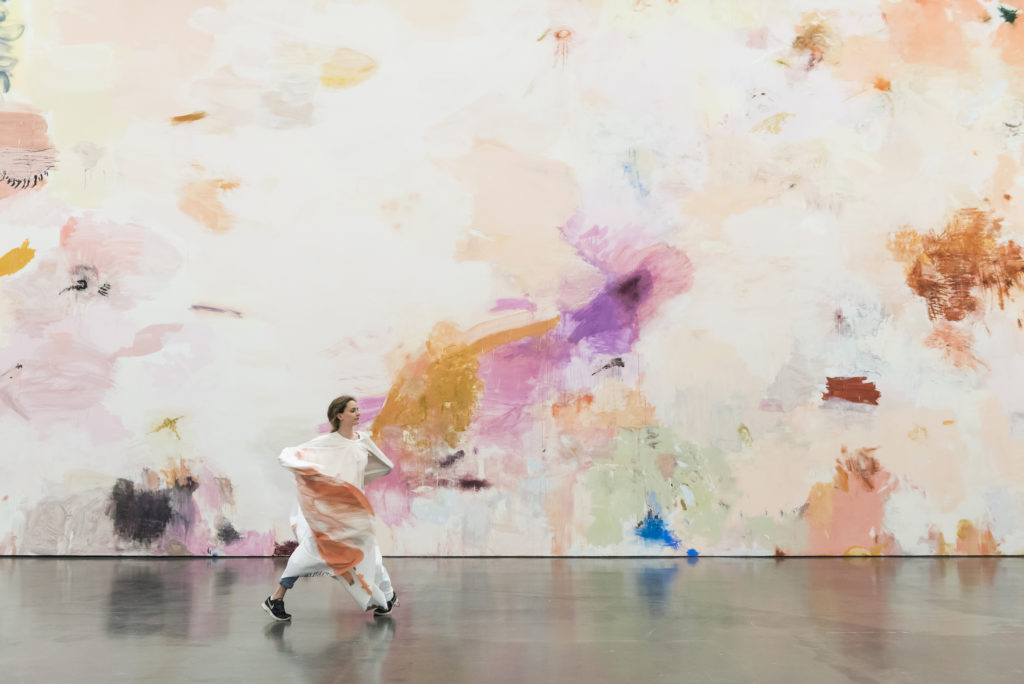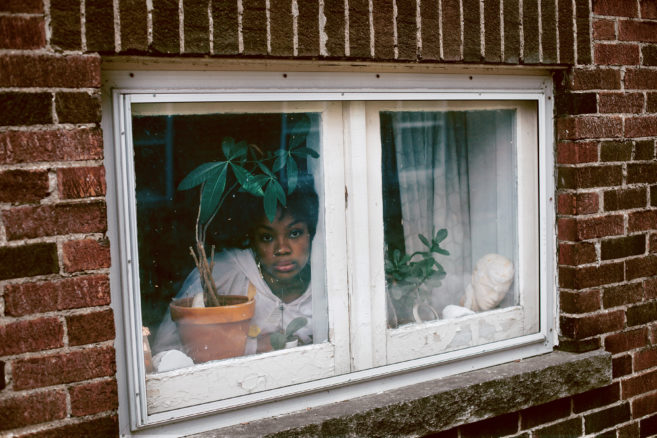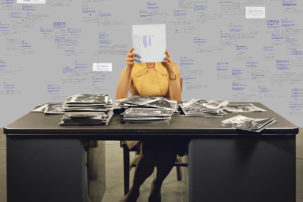Megan Rooney: The space is the most crucial factor for me when developing an exhibition. It becomes like the skin of a body, holding everything inside of it. The exhibition halls at MOCA have been very generative when thinking about this show. I was immediately drawn to the strong presence of the large concrete columns that stand in the space, and their unique narrative potential. I will be working on-site to create a large-scale mural throughout the entire gallery, making use of all the original walls in the space.
The murals will be born over a number of intense weeks. I spend a lot of time tracking through the space, familiarizing myself with how the space responds to my body and establishing pathways. I work to make the murals entirely on my own. There is no plan, no sketch and no predetermined narrative or image that I work towards. Working in this way involves a huge amount of risk. It exists precisely because of this kind of risk. Painting for me is somehow at its core a dangerous pursuit, because it requires something that I can only describe as faith. I am interested in how colour attaches to memory—how we see colour, how colour affects us. I believe these marathon acts of painting have the power to transport us far beyond the physical boundaries of a single contained space. They become vehicles for communication, for sharing our experiences and connecting us to history, beyond memory and beyond record.
A series of new sculptures will also be made in close dialogue with the existing architecture of the site. I have been thinking in particular about the former life of this factory space, which produced aluminum goods ranging from automotive parts to kitchen utensils. As a response, I have been thinking about the body’s currency and whether or not it has a kind of expiration date attached to it; about the human body as a producer and maker and how it will be viewed in the future; and about redundancy, not only in relation to labour, but also how buildings and architecture can become redundant—the private and personal implications of an ending. The objects and materials I use are ubiquitous and ordinary. I don’t make a hierarchy between materials. I feel there isn’t any inherent truth in materials alone—materials are what you make them do. In the process of building a show, I work intuitively, and I’m ruthless about abandoning ideas if they feel wrong. I’m interested in how materials can be destabilized and how a collection of things bound by place and affinity can produce narrative.

 Megan Rooney, EVERYWHERE BEEN THERE, 2019. Performance within the exhibition "Fire on the Mountain" at Kunsthalle Düsseldorf, 2019. Courtesy DREI, Cologne. Photo Katja Illner.
Megan Rooney, EVERYWHERE BEEN THERE, 2019. Performance within the exhibition "Fire on the Mountain" at Kunsthalle Düsseldorf, 2019. Courtesy DREI, Cologne. Photo Katja Illner.




